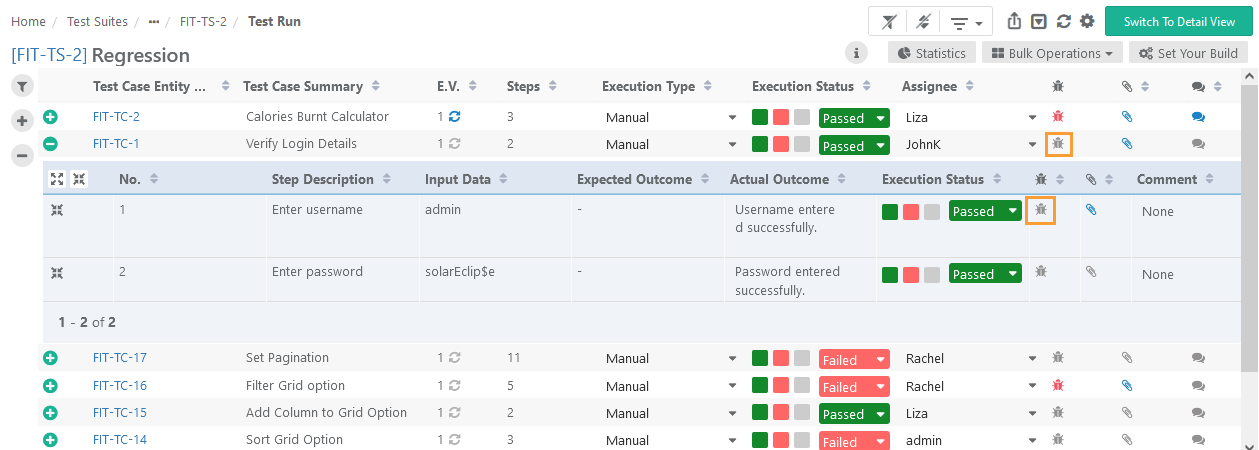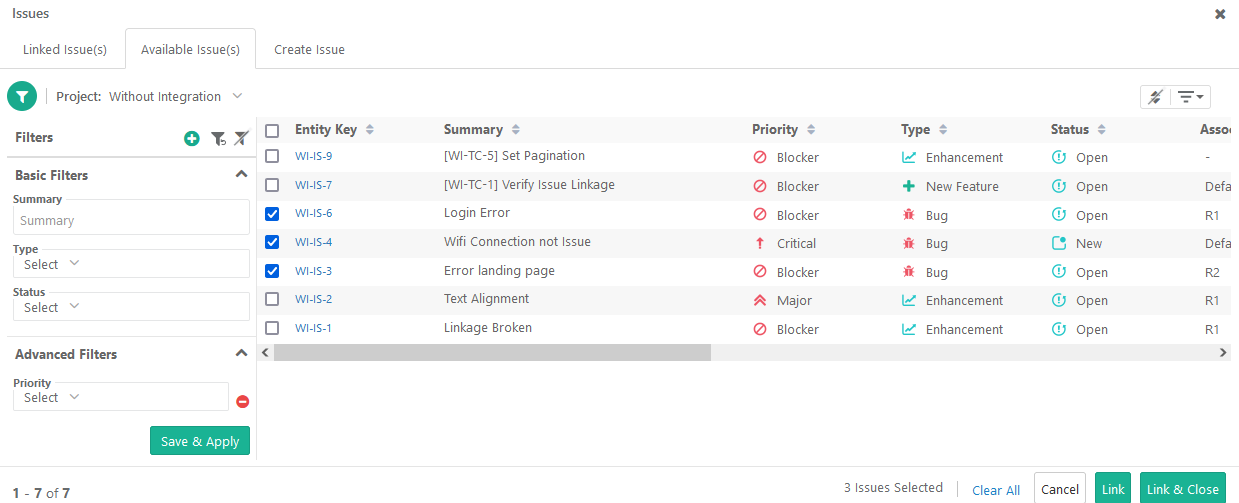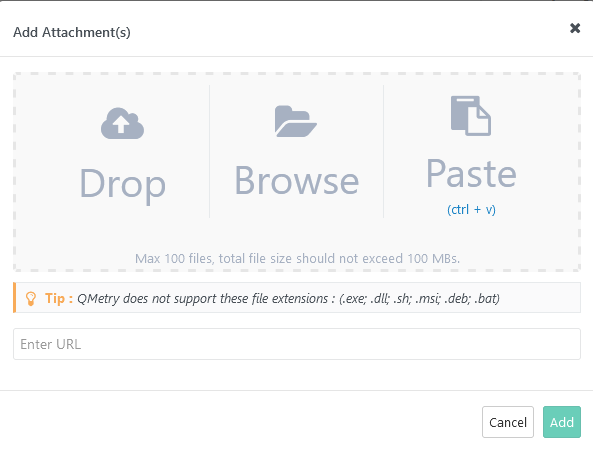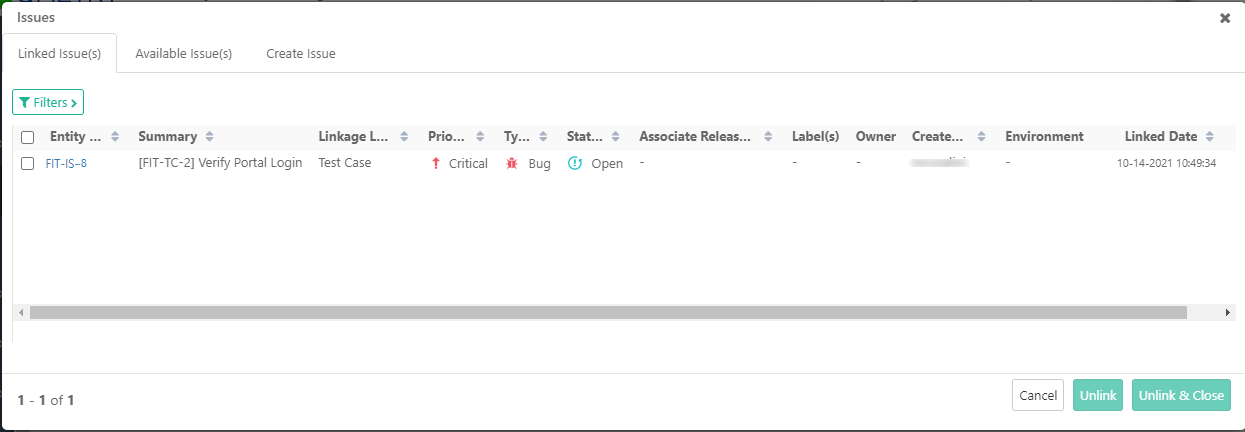| Table of Contents | ||
|---|---|---|
|
...
On the Test Run screen, click on the Bug icon for the test case for which you want to log issues. It opens the issues screen. Once a bug is added, the Bug icon turns red.
Issues Screen
The Issues screen has these tabs on it: Available Issues, Linked Issues, Link New Issues, and Link External Issue.
You can resize columns, apply sorting on columns (other than multi-lookup lists field type), and show/hide columns using the Arrange Columns option.
In the case of linking issues from Jira:
The Advance Filter option is also available for the custom fields that are configured/mapped for the Issue module in Projects > Integration.
The Arrange Columns option will show all the system and custom fields that are configured/mapped for the Issue module in Projects > Integration.
A. Jira Instance and Jira Project: You can link issues from multiple instances and across projects. The Project drop-down displays configured projects on which you have access.
...
1. On the Test Run Screen, click the Bug icon for a test case to which the issue is being added.
The Issues pop-up opens with these tabs on it: Available Issues, Linked Issues and Create Issue.
...
When a new issue is logged into QMetry (in QMetry as well as in external tracker) from the execution screen, the Issue Summary field will be auto-filled with Test Case ID and Test Case Summary for easy reference to the relevant test case the bug is logged for.
The Description field populates with Test Case Summary and Test Step details including UDF details.
- Users can link attachments under the Link Attachmentssection while creation of issues.
| Expand | ||
|---|---|---|
| ||
Steps
You can attach different types of attachments: files, images, and URL. The Add Attachment pop-up allows you to upload multiple files at a time. Add attachments in three ways:
Notes:
You can also remove individual attachments at the uploading stage. |
3. Follow the same process of adding an issue from the Issue module. Enter the issue details and click Create and Link.
...
Once you add an issue, it is automatically linked to the test case and it is displayed on the Linked Issues tab.
Creating Issues at Step Level for Automated Test Cases
If an error encounters while an automated test run, the generated Error Message and Trace are displayed in the respective columns on the test execution screen. When users create an issue at test step level from the execution screen, a .txt file containing this Error Message and Trace gets attached to the issue.
On opening the issue in QMetry, the Attachment tab in QMetry shows the .txt file attached to it which contains the Error Message and Trace generated while the automated test run.
Linking Existing Issues
- On the Test Run Screen, click on the Bug icon.
- The Issues screen opens.
- Open the Available Issues tab. It shows issues available to link with the test case. Issues added in QMetry as well as in External Tracker are displayed on the screen. Issues added in External Tracker can be identified by its External Key.
- Select issues on the screen and click on the Link button.
...
Create and Link New Jira Issues
On the Test Run Screen, click the Bug icon for the test case/step to which the issue is being added.
1. Open the Create Issue tab to add issues and link it to the test case.
2. Jira Instance and Jira Project: It shows the Jira instance and Jira project that has been configured with your current QMetry project. Select the Jira instance and project to which the issue is to be added.
3. The Description field: Issues raised to Jira from Test Execution Screen of QMetry fields include field values from QMetry. In QMetry, you can use the text formatting notations as per Jira Wiki Editor in the Description field.
The following fields will be auto populated from QMetry test case to Jira issue Description field:
...
On Execution Screen, hovering over the Bug icon displays two distinct counts - issues linked to test case and issues linked to test steps.
- On the test case list view, the Linked Issues Count column displays the count of issues linked at test steps level as well as test case level.
- On the test case detail page, the Issues tab displays Linkage Level of the issue along with Test Case Version.
- On the Issue detail screen, the Execution Runs tab the grid displays Linkage Level of the issue along with Test Case Version.
...












